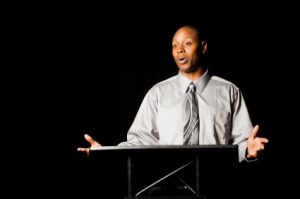Keenagers — The New Demographic
When Elliot was 12 years old, he and some buddies were racing around our house. I said, “Hey kids, lighten up a little bit.” Elliot looked at me sternly and said, “Dad, we’re not kids. We’re pre-teens!”
Elliot wanted a demographic of his own. He didn’t want to be a “kid” anymore. At the opposite end of the age spectrum, I now feel a similar need.
I now belong to a well established demographic defined as “over 65 and retired”. In other words, I’m old.
The odd thing is I don’t feel old, at least not in the traditional sense. I remember my grandfather. He had false teeth, an uncertain gait, and complained of myriad aches and pains. When he died, people said he died of old age. I’m not old like that – at least not yet.
So I want my own demographic. Yes, I’m over 65 and yes, I’m semi-retired. But I still teach part-time, run a website, and tend to my clients. I raise money for good causes. I study issues and have opinions. I serve on boards. I write letters to the editor. I’m not (yet) an old guy sitting on a park bench watching the world go by.
I also spend money. My wife and I have a nest egg and some purchasing power. We should be of interest to marketers who have interesting things or services to sell. But it would be easy for a marketer to overlook us. We could easily be mistaken for regular old “old” people.
So, let’s segment the market and create a new demographic. But what should we call it? The question came to a head for me when I read a recent editorial in The Economist called “Over 65 Shades Of Grey”. The article notes that “Branding an age category might sound like a frivolous exercise. But life stages are primarily social constructs, and history shows that their emergence can trigger deep changes in attitudes. … Declaring a new stage of life could help change perceptions.”
To remind marketers and analysts that we exist – and that we’re not doddering, dependent drains on society – we need a name. The Economist suggests a few non-starters like “geriactives” and “pre-tirees.” Sorry, but those just don’t work for me.
So, I hereby propose that we name our demographic the keenagers. Like teenagers, we’re a well-defined group with many common interests. We’re keen to learn, travel, advise, engage, and spend. We’re even keen to work every now and then. We’re keen to do, not just observe.
What are the advantages of establishing keenagers as a separate demographic? First, we can change perceptions. We’re not old in the traditional sense and don’t need to be treated as such. Second, marketers can develop and refine products and services that meet our needs more effectively. Third, forecasters can fine-tune their data make better predictions about us and about society as a whole.
Perhaps the ultimate advantage is that the label gives us keenagers a convenient and non-derogatory way to refer to ourselves. We belong to an attractive and interesting cohort. We’re not old. We’re keenagers.
Why Do Smarter People Live Longer?
A study published last week in the British Medical Journal states simply that, “Childhood intelligence was inversely associated with all major causes of death.”
The study focused on some 65,000 men and women who took the Scottish Mental Survey in 1947 at age 11. Those students are now 79 years old and many of them have passed away. By and large, those who scored lower on the test in 1947 were more likely to have died – from all causes — than those who registered higher scores.
This is certainly not the first study to link intelligence with longevity. (Click here, here, and here, for instance). But it raises again a fundamental question: why would smarter people live longer? There seem to be at least two competing hypotheses:
Hypothesis A: More intelligent people make better decisions about their health care, diet, exercise, etc. and — as a result — live longer.
Hypothesis B: whatever it is that makes people more intelligent also makes them healthier. Researchers, led by Ian Deary, call this hypothesis system integrity. Essentially, the theory suggests that a healthy system generates numerous positive outcomes, including greater intelligence and longer life. The theory derives from a field of study known as cognitive epidemiology, which studies the relationships between intelligence and health.
Hypothesis A focuses on judgment and decision making as causal factors. There’s an intermediate step between intelligence and longevity. Hypothesis B is more direct – the same factor causes both intelligence and longevity. There is no need for an intermediate cause.
The debate is oddly similar to the association between attractiveness and success. Sociologists have long noted that more attractive people also tend to be more successful. Researchers generally assumed that the halo effect caused the association. People judged attractive people to be more capable in other domains and thus provided them more opportunities to succeed. This is similar to our Hypothesis A – the result depends on (other people’s) judgment and there is an intermediate step between cause and effect.
Yet a recent study of Tour de France riders tested the notion that attractiveness and success might have a common cause. Researchers rated the attractiveness of the riders and compared the rankings to race results. They found that more attractive riders finished in higher positions in the race. Clearly, success in the Tour de France does not depend on the halo effect so, perhaps, that which causes the riders to be attractive may also cause them to be better racers.
And what about the relationship between intelligence and longevity? Could the two variables have a single, common cause? Perhaps the best study so far was published in the International Journal Of Epidemiology last year. The researchers looked at various twin registries and compared IQ tests with mortality. The study found a small (but statistically significant) relationship between IQ and longevity. In other words, the smarter twin lived longer. Though the effects are small, the researchers conclude, “The association between intelligence and lifespan is mostly genetic.”
Are they right? I’m not (yet) convinced. Though significant, the statistical relationship is very small with r = 0.12. As noted elsewhere, variance is explained by the square of r. So in this study, IQ explains only 1.44% (0.12 x 0.12 x 100) of the variance in longevity. That seems like weak evidence to conclude that the relationship is “mostly genetic”.
Still, we have some interesting research paths to follow up on. If the theory of system integrity is correct, it could predict a whole host of relationships, not just IQ and longevity. Attractiveness could also be a useful variable to study. Perhaps there’s a social aspect to it as well. Perhaps people who are healthy and intelligent also have a larger social circle (see also Dunbar’s number). Perhaps they’re more altruistic. Perhaps they are more symmetric. Ultimately, we may find that a whole range of variables depend partially – or perhaps mainly – on genetics.
Physics Versus Rhetoric
Most social sciences have a bad case of physics envy. They covet physics’ certainty, precision, and predictability. That’s certainly the case with rhetoric, the discipline that deals with the art and science of persuasion.
Physics allows us to make precise this-then-that statements. If we do this, then that is certain to happen. Those of us who teach rhetoric would love to have the same certainty. We would love to say, “If we arrange our argument like this, then the audience will certainly agree with us”.
But rhetoric deals with human beings whose behavior is anything but certain. Rhetoric teaches us to argue without anger so that we may find the best choice among multiple options. If we allow the rhetorical process to work, we can often find the best alternative. But we can never guarantee it. Rhetoric reigns in any human endeavor where uncertainty is certain.
So let’s compare physics and rhetoric. What are they good for and how do they complement each other? Further, let’s ask a simple question: which discipline is best for the planet? I’ll focus on deliberative rhetoric, which asks us to make choices about the future. (Two other major forms are demonstrative and forensic rhetoric).
Physics starts from what is true. Rhetoric starts from what we agree to.
Both physics and rhetoric use arguments in which propositions lead to a conclusion. We typically call these syllogisms, with major premises and minor premises. In physics, the major premise is always verifiably true. Here’s an example of a syllogism in physics:
Major premise: Nothing can travel faster than the speed of light
Minor premise: We are travelling in a nuclear-powered space ship.
Conclusion: We are travelling slower than the speed of light.
The point of this somewhat simplistic syllogism is that the major premise is verifiably true. We start from the truth.
Now let’s look at a rhetorical syllogism, which is often referred to as an enthymeme (though the technical definition of an enthymeme is slightly different).
Major premise: Lower taxes are better for our society.
Minor premise: My party will lower taxes (more than the other party)
Conclusion: You should vote for my party.
Note that the major premise (also known as a commonplace) is debatable. But, if your audience agrees with the commonplace, you can proceed step by step to a conclusion that they will also agree with. It’s important to know what the audience believes. Rhetoric start where the audience is, not where the truth is …. or where we are.
Physics seeks the truth. Rhetoric seeks the best choice.
Physics makes predictions and tests them to determine if they’re true. Typically, a prediction is either true or not.
Rhetoric, on the other hand, deals with choices. To discover the best choice, we first have to identify all possible choices. We then present evidence (which may or may not be verifiably true) to identify the best choice.
Physics is based on facts. Rhetoric is based on benefits.
Physics has a well-defined set of verifiable facts. Rhetoric, by contrast, depends on benefits, which may or may not accrue to a given set of people.
We state the benefits (often known as the Advantageous) to persuade people to agree with us. We might say, for instance that lower taxes will benefit the middle class. This may well be true but, again, there is no certainty.
Physics cannot live without facts. Rhetoric cannot live solely with facts. We must be able to state benefits and advantages to persuade people to agree with a given proposition.
Physics follows rules of logic. Rhetoric follows rules of agreement.
The rules of logic are formal and specific. It’s easy to tell if we have violated logic. Even a computer can do it.
The rules of agreement are much more open-ended. Credibility is important. Arguments may be emotional and may include enticing benefits and emoluments. Arguments do not have to be strictly logical. We may use various psychological and sociological tools of influence, including consistency or social proof or scarcity. We may do favors for you and influence you to like us. The goal is to gain agreement.
Physics is more like chess. Rhetoric is more like poker.
In chess, we first need to know the rules and the pieces. After that, logic takes over and guides our efforts.
In poker, we need to know the rules and the cards and the people. Thinking logically is important. But reading people is probably more important.
Physics is about the past. Rhetoric is about the future.
Physics explains what happened. Rhetoric probes what will happen. If we can argue without anger, we can consider and evaluate all possible options. We can evaluate benefits and possibilities. We can decide what’s fair and what’s not fair. We can agree on the best possible course of action.
Of course, we can’t prove that we’ve made the best choice. But the process of considering, evaluating, arguing, and influencing, gives us a better chance of success than any other alternative.
The act of reaching an agreement also improves our chances of future success. As Lincoln noted, a house divided against itself cannot stand. The opposite is not necessarily true. A house united in agreement may not stand … but it has a much better chance than a house divided.
So, which discipline is more important to our future: physics or rhetoric? Physics has brought us awe-inspiring insights into the world around us. It has also given us the knowledge to destroy the world. Rhetoric, on the other hand, has taught us to argue without anger, gain agreement, and move people to action. Physics is about knowledge. Rhetoric is about wisdom. Physics could destroy the world. Rhetoric could possibly – just possibly – save it.
Happiness and Creativity
The 2017 World Happiness Report was released yesterday. The headlines today are all about Norway, which supplanted Denmark as the happiest country in the world. That’s nice and I’m sure that Norwegians are celebrating today. But what intrigues me is the relationship between happiness and creativity. (See also here, here and here).
In 2015, the Martin Prosperity Institute published the Global Creativity Index. Reviewing the two lists together suggests that the relationship between happiness and creativity is very tight indeed. Here are the top ten countries on each list.
| Rank | Happiness (2017) | Most Creative (2015) |
| 1 | Norway | Australia |
| 2 | Denmark | United States |
| 3 | Iceland | New Zealand |
| 4 | Switzerland | Canada |
| 5 | Finland | Denmark |
| 6 | Netherlands | Sweden |
| 7 | Canada | Finland |
| 8 | New Zealand | Iceland |
| 9 | Australia | Singapore |
| 10 | Sweden | Netherlands |
Of the ten happiest countries in the world, eight also make the top ten list for most creative countries in the world. The two that miss — Norway and Switzerland — don’t miss by much. Norway is 11th on the most creative list; Switzerland is 16th.
Conversely, of the ten most creative countries in the world, eight also make the list of the happiest countries in the world. Again, the two that don’t make the list — the United States and Singapore — don’t miss by much. The United States is 14th; Singapore is 26th.
What’s it all mean? I can think of at least four ways to interpret the data:
- Happiness causes creativity — there’s a meme that says that only tortured geniuses are truly creative. Perhaps it’s wrong. Perhaps you have to be happy to be creative.
- Creativity causes happiness — this explanation appeals more to me. I know that when I create something (like an article for this website), it makes me happy. I get a little glow of accomplishment. On the other hand, I know happy people who aren’t very creative and vice-versa.
- A hidden third variable causes happiness and creativity to correlate — perhaps there’s something else going on. It could be income — all of the countries are fairly rich. It could be government policy — they all invest public funds in research. It could be geography — they are all fairly far from the equator. It could be language — all of the countries on the list have very good English language skills.
- The two surveys are measuring essentially the same thing — though the two surveys seem quite different, perhaps they really measure the same thing. Perhaps happiness and creativity are so throughly intertwined that we can’t tease them apart.
It’s also interesting to delve into which countries have the best combination of happiness and creativity. We can make some crude judgments by adding up the national position in each survey. Like golf, the low score wins. For instance, Denmark is second in happiness and fifth in creativity, for a combined score of seven. As it happens, that’ s the lowest score — so Denmark takes first place in the combined league table. Here are the top five combined scores. I don’t know about you but I think I’ll soon pay a visit to Denmark.
| Rank | Country | Combined Score |
| 1 | Denmark | 7 |
| 2 | Australia | 10 |
| 3 | Iceland | 11 |
| 3 (tie) | Canada | 11 |
| 3 (tie) | New Zealand | 11 |
Persuasion, Traffic, and Zebras
Let’s say that you’re the mayor of a big city that’s growing rapidly. Traffic jams last the entire day. Tempers fray and drivers become more and more aggressive. People ignore traffic laws. Pedestrians cross the streets whenever and wherever. Accidents happen constantly. Police can’t keep track of the chaos.
You’ve tried cracking down with more police writing more traffic tickets. That only makes the drivers angrier. Traffic is constantly tangled. The air is increasingly polluted. Your popularity is plummeting. You need a persuasion strategy to convince drivers to play fair and obey the rules. What to do?
How about putting some zebras in the streets? That’s what the mayor of La Paz, Bolivia did. Here’s how the magazine Veinte Mundos described the situation:
“Vehicular and pedestrian traffic is increasing every day in the Bolivian capital. Automobiles don’t respect the traffic signals and pedestrians cross the street wherever they want. It’s total chaos. People’s lives – especially children’s lives – are in constant danger. As a result, local authorities decided to take concrete steps to improve the situation. Thus were born the ‘zebras.'”
Each day in La Paz, roughly 400 to 500 young people dressed in zebra costumes disperse through the city to guide and direct traffic. But they’re not traffic cops. They’re not there to enforce the rules. They’re behavior modifiers. Ultimately, they hope to persuade people to behave – and drive — better.
The zebras dance and chatter and interact with both pedestrians and drivers. They remind people to mind the traffic lights, buckle up, cross with the light, and generally behave like good citizens. They reward good behavior with a dance, a pat on the back, and some kind words. They make fun of bad behavior by miming “Can you believe that? WTF?”
According to El País, the zebra program began in 2001 and quickly captured the attention of Kathia Salazar, a popular local actress. Salazar volunteered to run the program and soon became known as mamá cebra. Salazar says that the program started slowly: “When we first began, people yelled at the zebras, cursed them, and even tried to run them over. Slowly, things changed. Today, pedestrians are the ones who are protecting the zebras.”
The zebra program is sufficiently popular that it is now spreading to other cities, like Tarija, Sucre, and El Alto. It’s also expanding into new services. Zebras are now visiting schools and retirement homes. Their message has expanded, too. It’s not just about traffic. More generally, it’s about good citizenship and a positive attitude. As Amanda Pinos, a 29-year-old zebra puts it: “Our principal task as urban educators is to ask citizens to reflect on their own behavior and create a kinder, more respectful attitude.”
A similar program in Bogotá, Colombia inspired the zebra program in La Paz. The Bogotá program, which used mimes rather than zebras, began in the early 1990s and claimed to have reduced traffic fatalities by as much as 50%. I haven’t seen similar statistics for La Paz but it’s a fair bet that the zebras have calmed and smoothed and enhanced traffic in a traditionally tumultuous city. Think about it. Wouldn’t you drive more safely if zebras were around?




